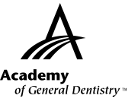|
Exercise No. 332
Subject Code: 690
Implants
The 15 questions for this exercise are based on the article, “Single tooth replacement utilizing implants in the esthetic zone: a case report.” This exercise was developed by Steven E. Holbrook, DMD, MAGD, in association with the General Dentistry Self-Instruction committee.
|
Reading the article and successfully completing this exercise will enable you to:
- identify the keys to help determine peri-implant esthetics;
- recognize the need for ridge preservation following extraction; and
- understand how to optimize esthetics with anterior implants.
|

